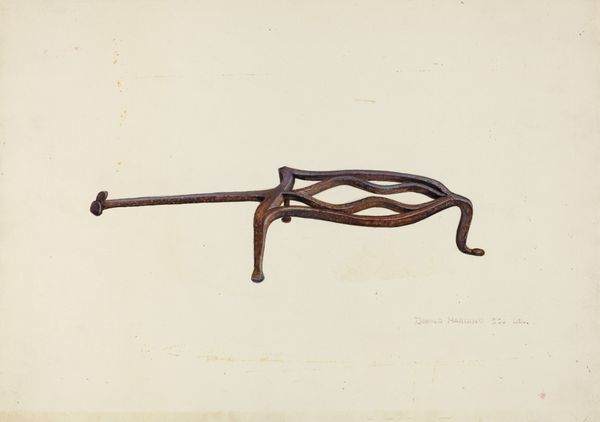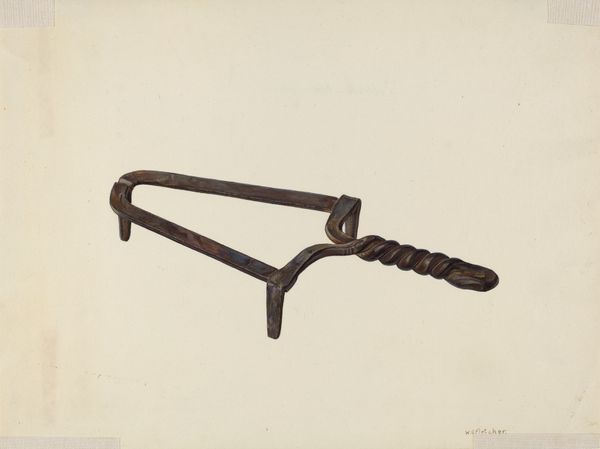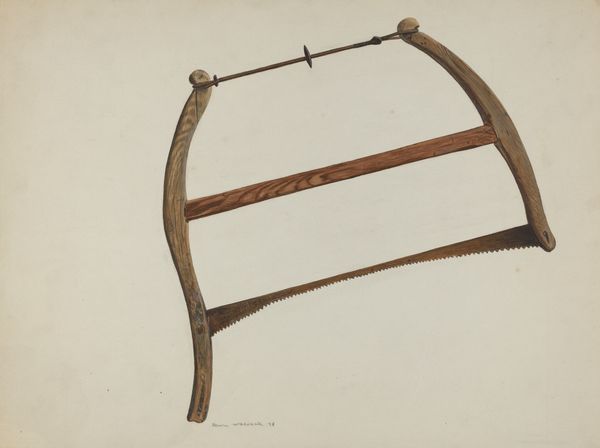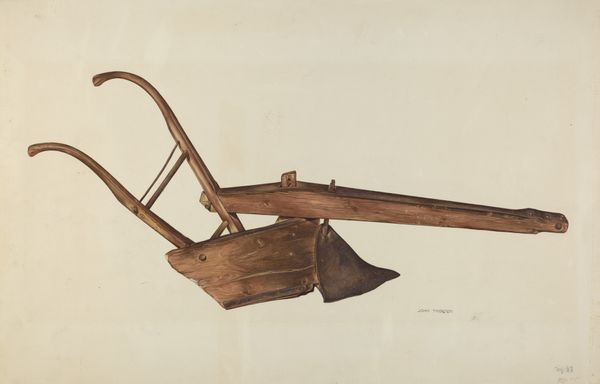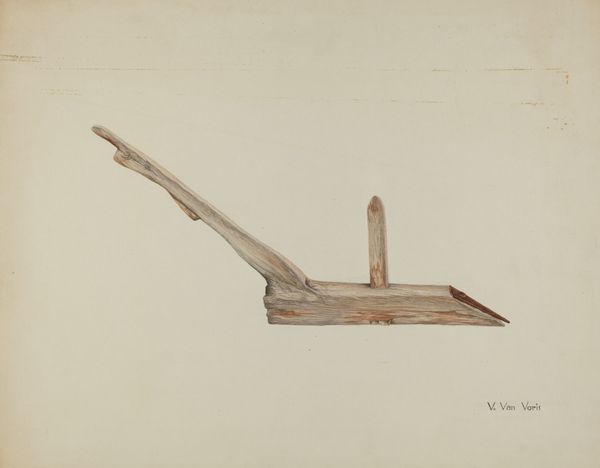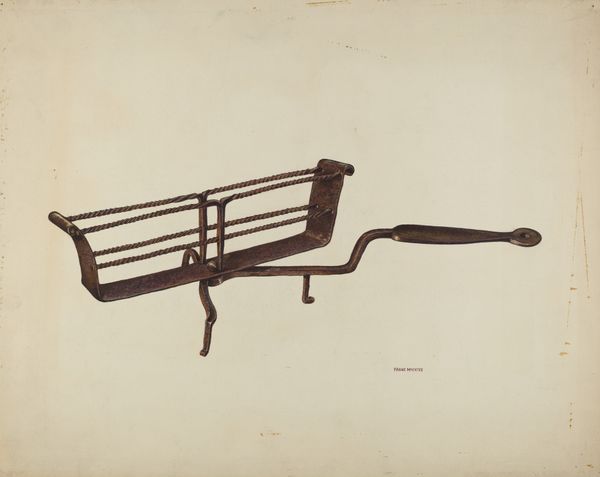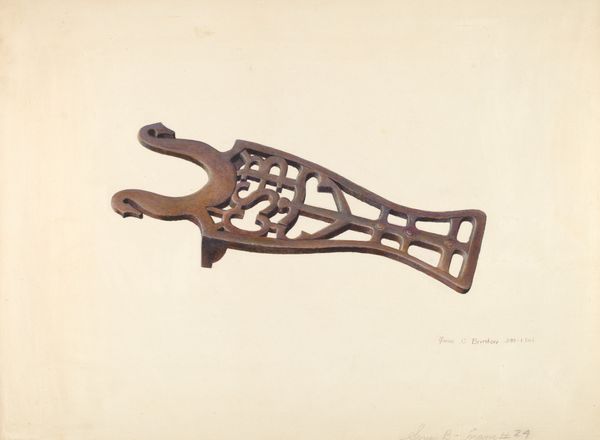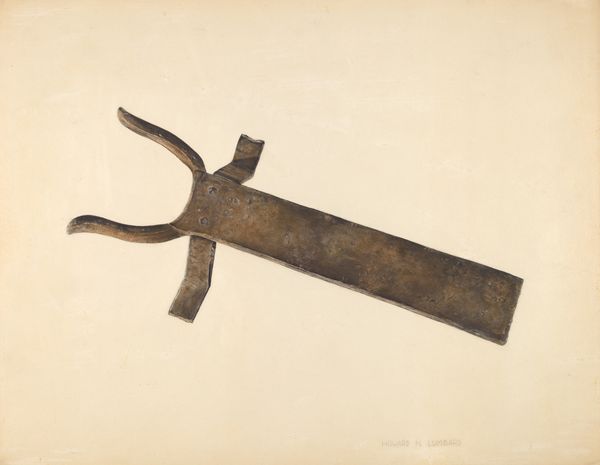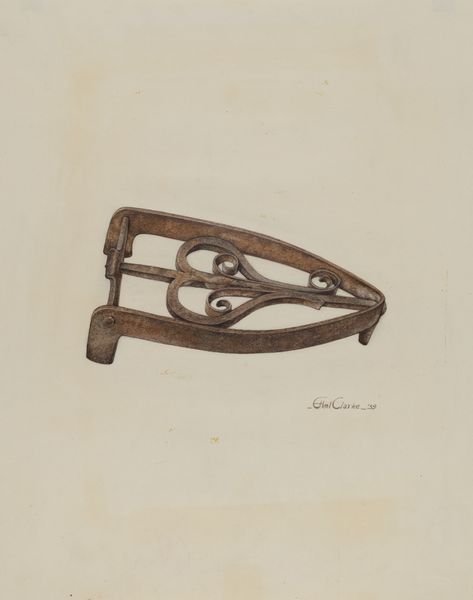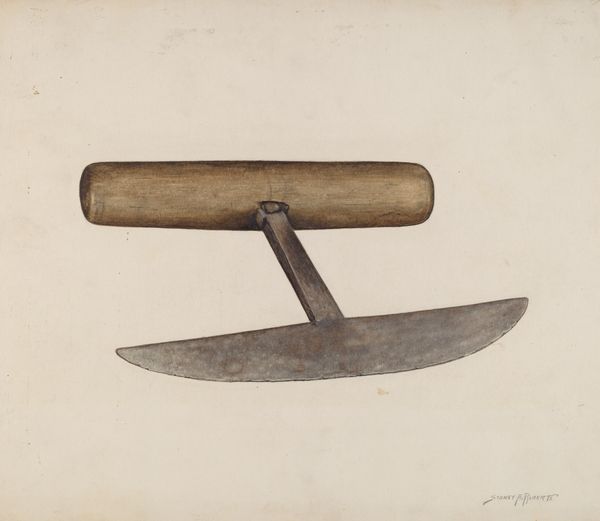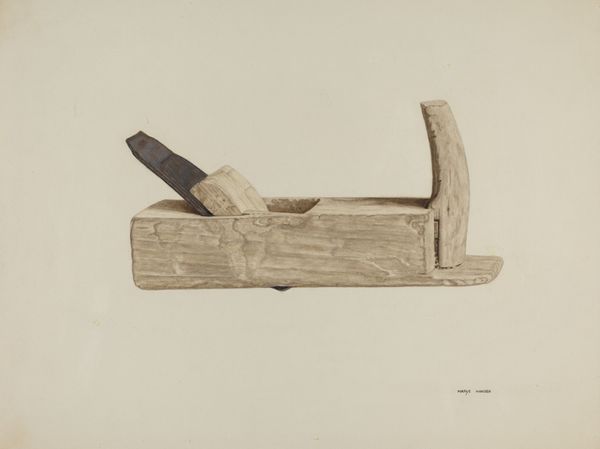
drawing, paper, watercolor
#
drawing
#
paper
#
watercolor
#
modernism
#
watercolor
Dimensions: overall: 35.6 x 45.7 cm (14 x 18 in.) Original IAD Object: 12 1/2" long; 6" wide; 2" high
Copyright: National Gallery of Art: CC0 1.0
Curator: Editor: This watercolor and ink drawing on paper, called "Flat Iron Stand," dates back to around 1940. The artist is Cora Parker. It's fascinating how a mundane object is elevated here; the rusty hues almost make it look precious. What do you make of it? Curator: For me, it screams of the dignity of labor, doesn’t it? A stand for an iron is not something anyone would usually see as worthy of artistic attention. Parker elevates not just the object, but the unseen labor attached to it. What does this seemingly humble, handmade object suggest to you about the social context of the time? Editor: It feels very much of a period where people made things to last. I mean, consider that it is worthy to draw… What do you mean by dignity of labor? Curator: Think about the production process involved in both the making of the iron stand and the act of ironing clothes. Ironing wasn’t just ironing; it was a social expectation, performed mainly by women, often from lower economic strata. It was laborious, hot, repetitive work. The rendering celebrates those actions. Do you see any traces of artistic labor in Parker's watercolor that further enhances this point? Editor: Well, the attention to detail, despite its ordinariness, signals artistic labor. But are you suggesting Parker aimed to criticize these gender roles, or perhaps find dignity in them? Curator: Maybe it is less about strict critique, and more a comment on material culture itself. How do we assign value? She asks us to question our preconceived notions through a delicate rendering, that elevates the domestic. This invites us to rethink who decides what constitutes art. Editor: That makes sense! It’s interesting how an everyday item, represented with such care, can actually tell a rich story about work, gender, and value. I'll never look at an iron the same way again! Curator: Precisely. It’s a gentle but firm reminder that beauty and significance exist even in the most overlooked aspects of life. And art has power to question these unspoken structures of social contexts.
Comments
No comments
Be the first to comment and join the conversation on the ultimate creative platform.
